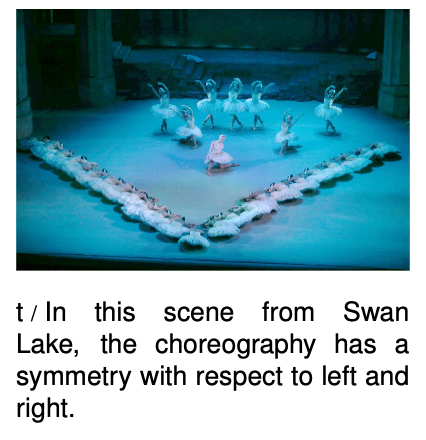LM 24.6 Symmetry and handedness Collection
Tags | |
UUID | 1eb63637-f145-11e9-8682-bc764e2038f2 |
24.6 Symmetry and handedness by Benjamin Crowell, Light and Matter licensed under the Creative Commons Attribution-ShareAlike license.
24.6 Symmetry and handedness (optional)
 Imagine that you establish radio contact with an alien on another planet. Neither of you even knows where the other one's planet is, and you aren't able to establish any landmarks that you both recognize. You manage to learn quite a bit of each other's languages, but you're stumped when you try to establish the definitions of left and right (or, equivalently, clockwise and counterclockwise). Is there any way to do it?
Imagine that you establish radio contact with an alien on another planet. Neither of you even knows where the other one's planet is, and you aren't able to establish any landmarks that you both recognize. You manage to learn quite a bit of each other's languages, but you're stumped when you try to establish the definitions of left and right (or, equivalently, clockwise and counterclockwise). Is there any way to do it?
If there was any way to do it without reference to external landmarks, then it would imply that the laws of physics themselves were asymmetric, which would be strange. Why should they distinguish left from right? The gravitational field pattern surrounding a star or planet looks the same in a mirror, and the same goes for electric fields. The field patterns shown in section 24.2 seem to violate this principle, but do they really? Could you use these patterns to explain left and right to the alien? In fact, the answer is no. If you look back at the definition of the magnetic field in section 24.1, it also contains a reference to handedness: the counterclockwise direction of the loop's current as viewed along the magnetic field. The aliens might have reversed their definition of the magnetic field, in which case their drawings of field patterns would look like mirror images of ours.
 Until the middle of the twentieth century, physicists assumed that any reasonable set of physical laws would have to have this kind of symmetry between left and right. An asymmetry would be grotesque. Whatever their aesthetic feelings, they had to change their opinions about reality when experiments by C.S. Wu et al. showed that the weak nuclear force (section 22.4) violates right-left symmetry! It is still a mystery why right-left symmetry is observed so scrupulously in general, but is violated by one particular type of physical process.
Until the middle of the twentieth century, physicists assumed that any reasonable set of physical laws would have to have this kind of symmetry between left and right. An asymmetry would be grotesque. Whatever their aesthetic feelings, they had to change their opinions about reality when experiments by C.S. Wu et al. showed that the weak nuclear force (section 22.4) violates right-left symmetry! It is still a mystery why right-left symmetry is observed so scrupulously in general, but is violated by one particular type of physical process.
24.6 Symmetry and handedness by Benjamin Crowell, Light and Matter licensed under the Creative Commons Attribution-ShareAlike license.
Calculators and Collections
- Comments
- Attachments
- Stats
No comments |
